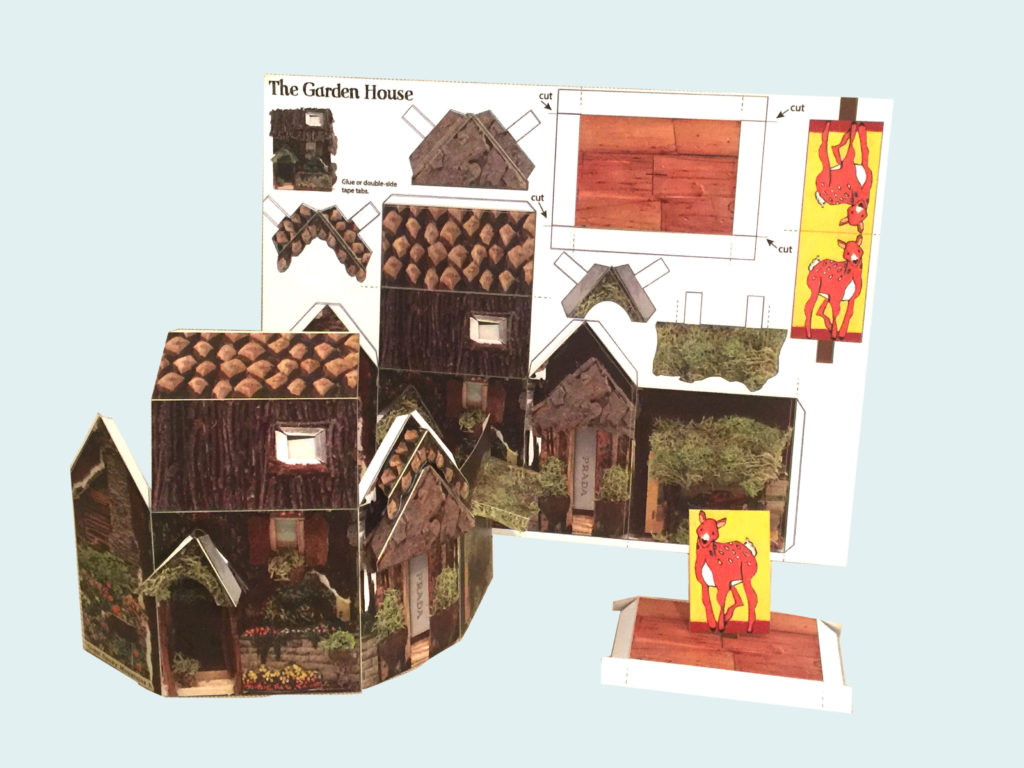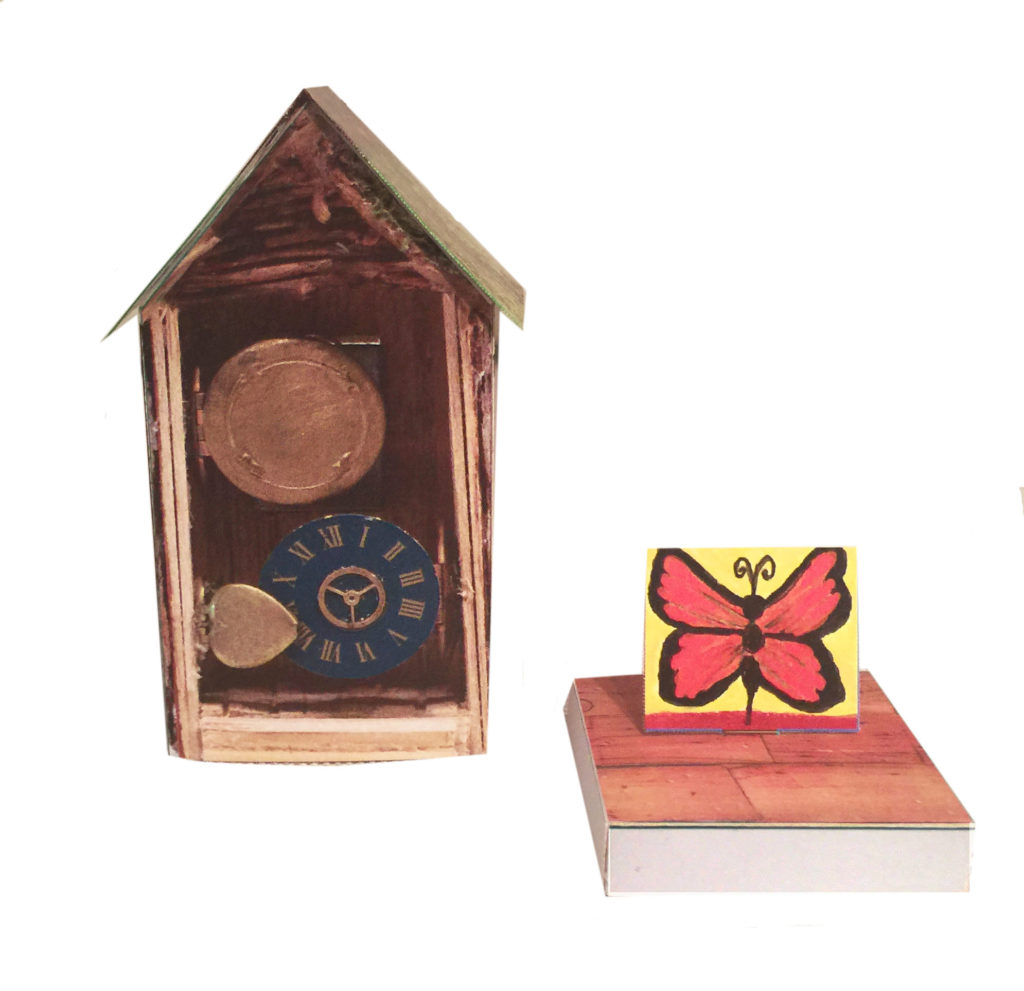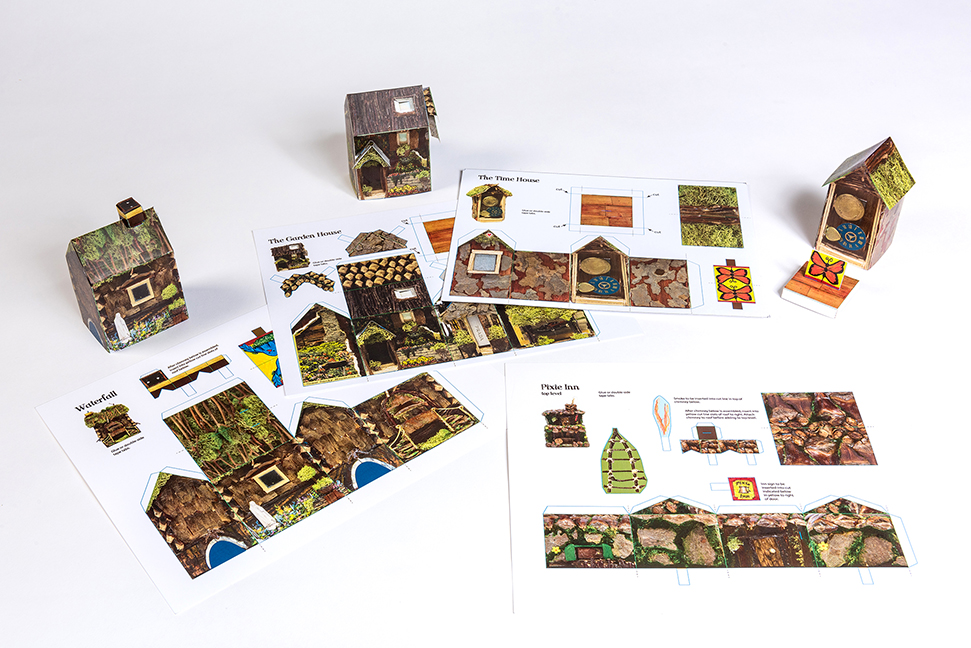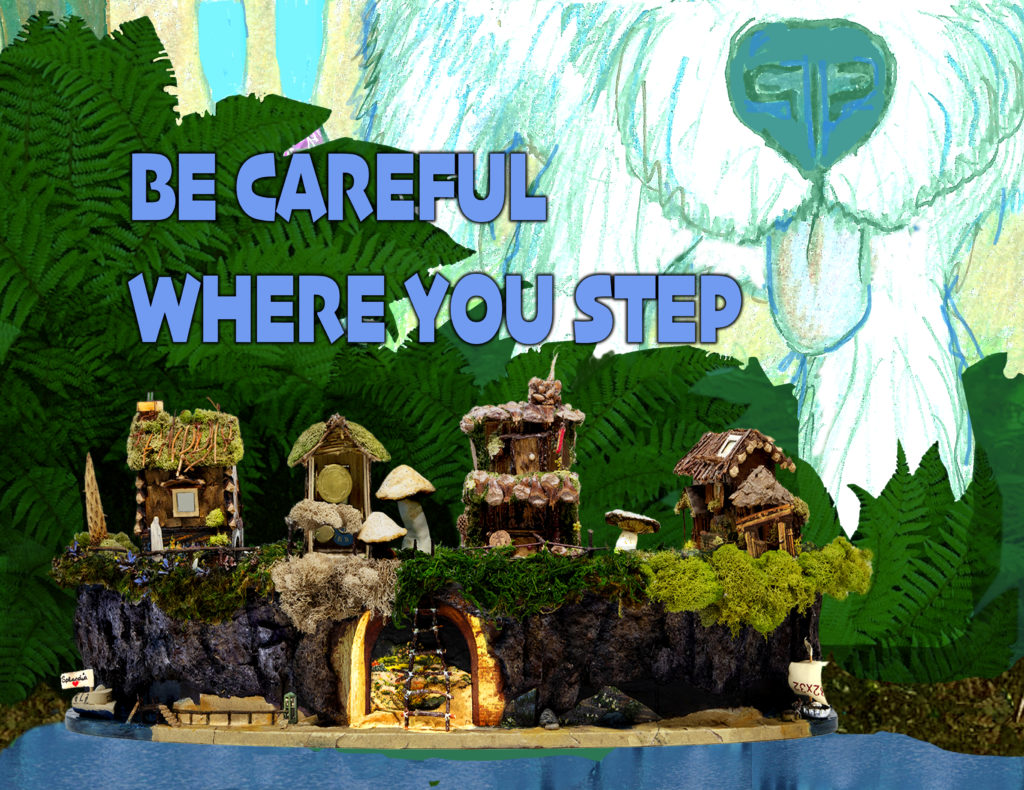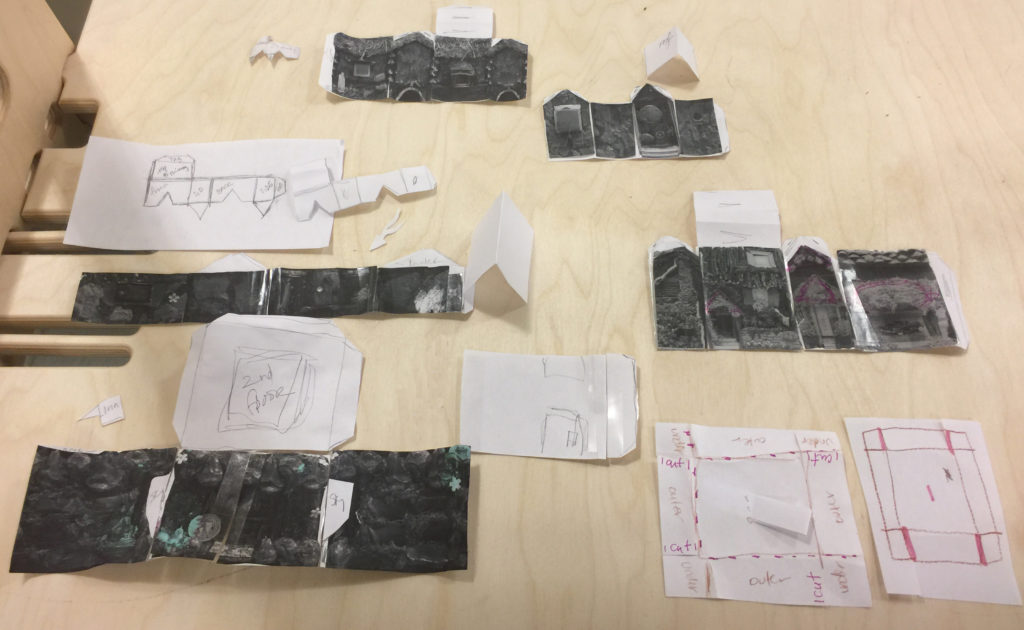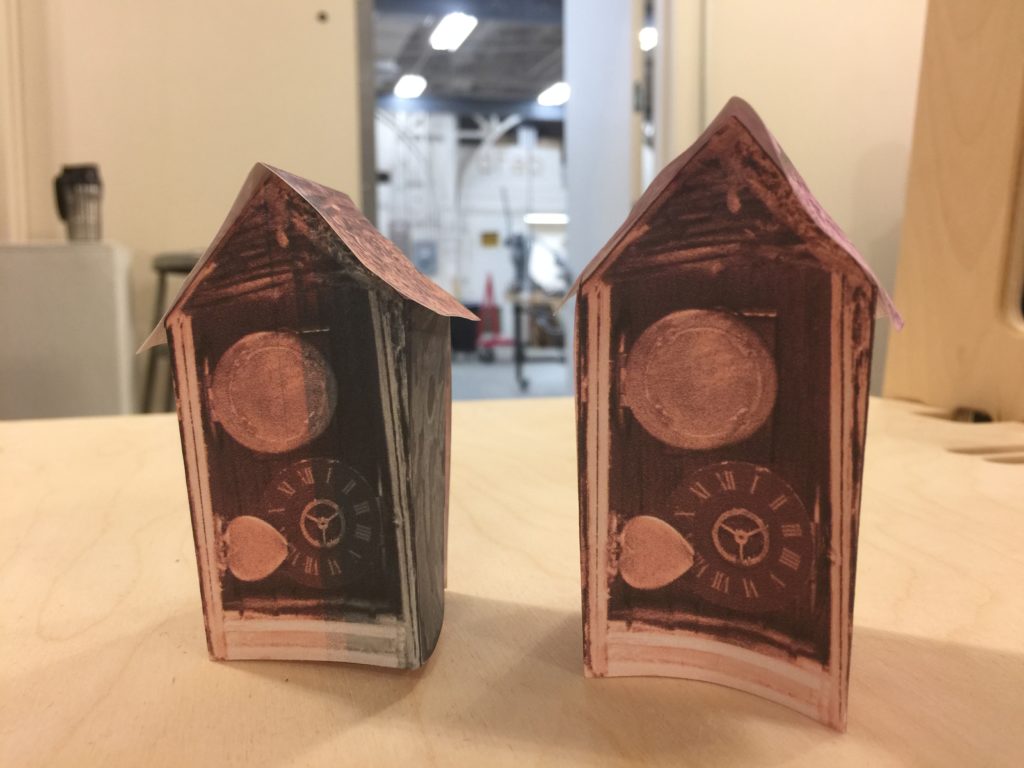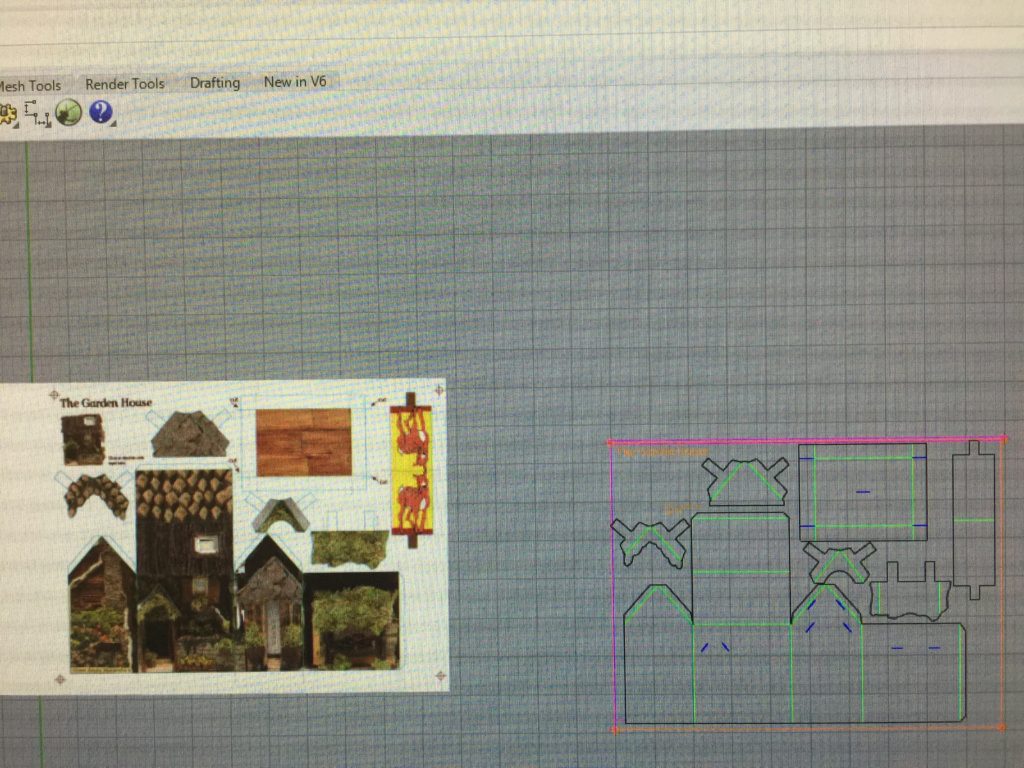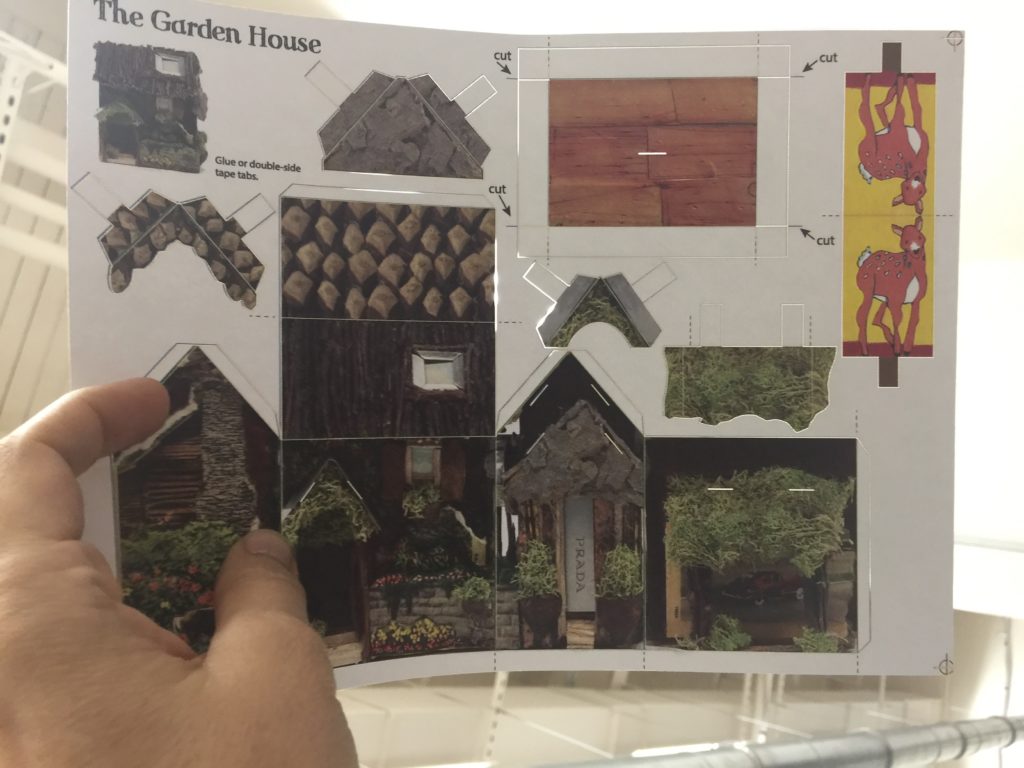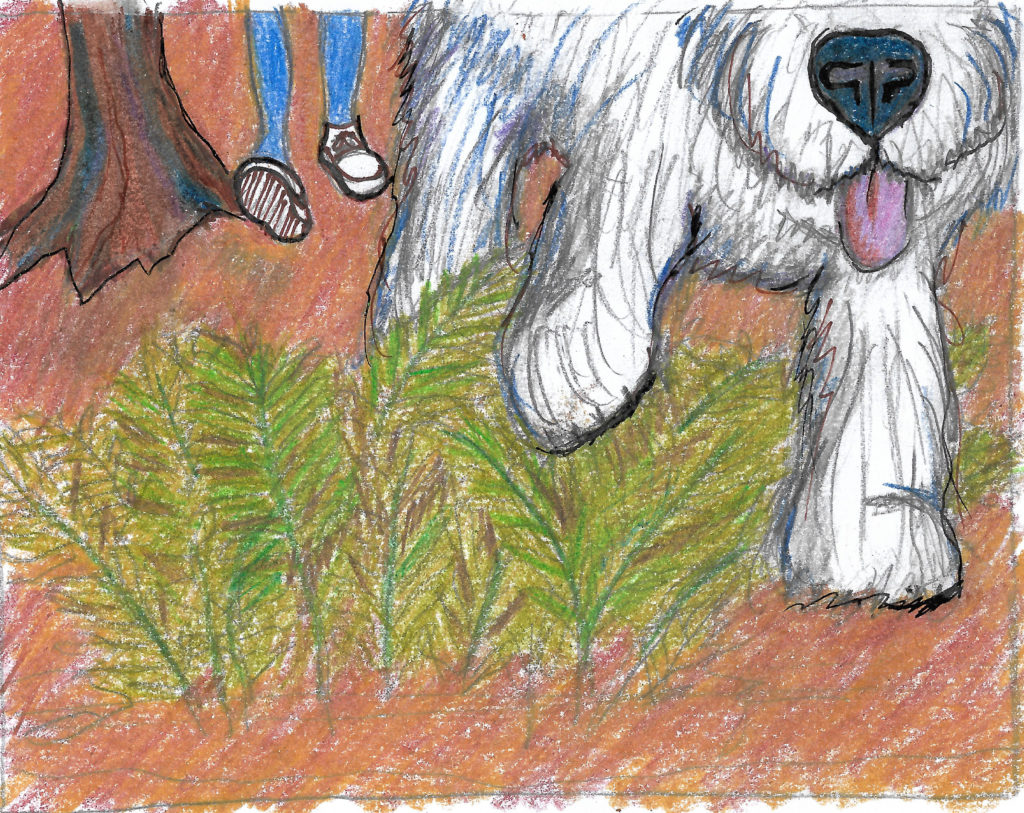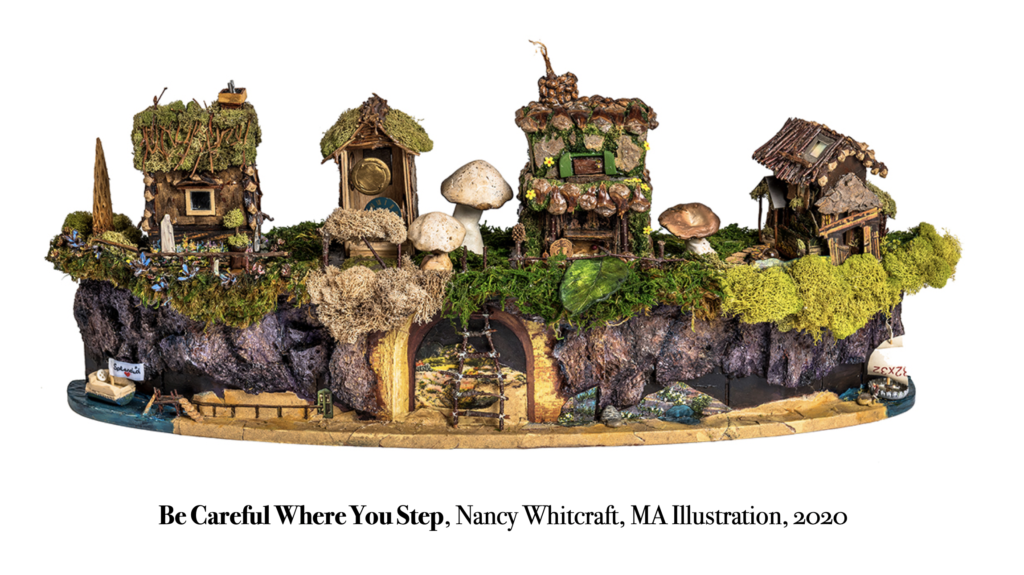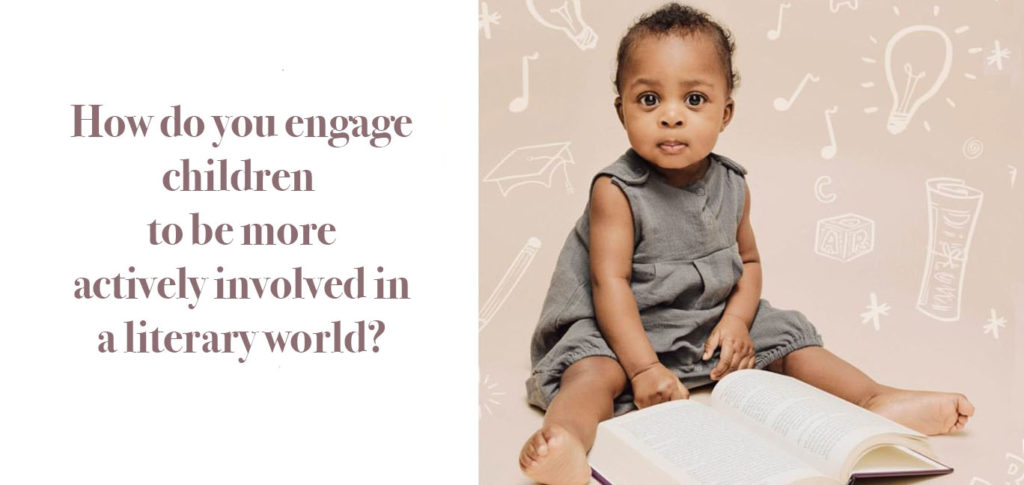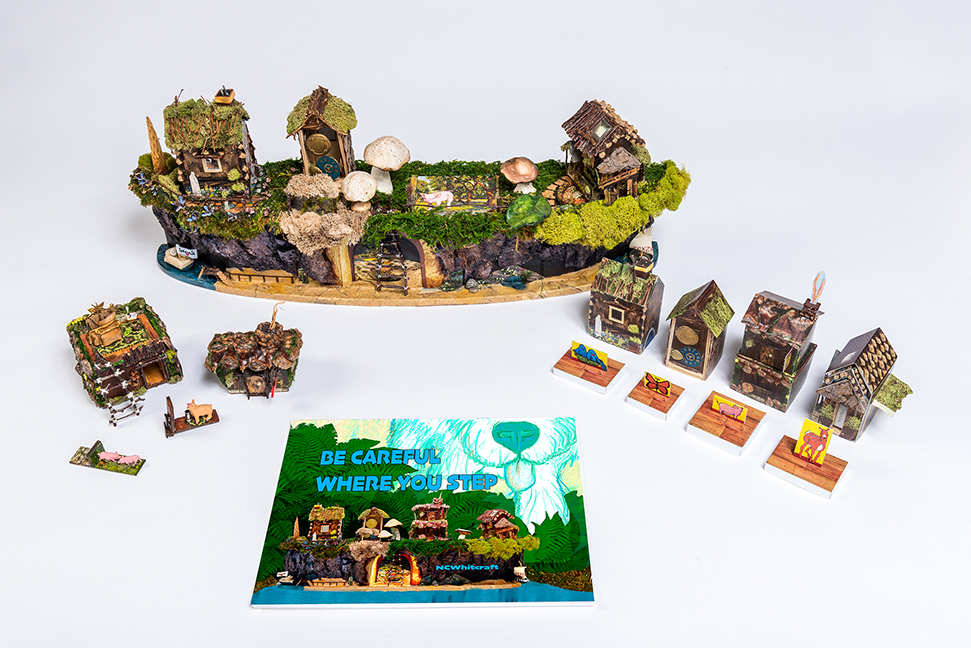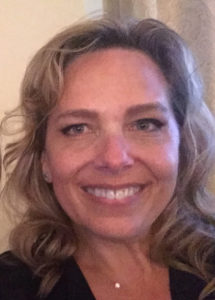
Nancy Whitcraft, MA Illustration, 2019
Nancy Whitcraft is an MA illustration major. Currently, she is working on how to integrate her two-dimensional drawings with her three-dimensional, hand-crafted landscapes. Through a myriad of technologies such as photography, and the Abode Suite programs she is combining the two worlds into one.
Project Overview
Going green and recycling have always been important to our world, but did you know that it is also important in the world of fairies? It’s true. Fairies are alive and well, and all around us. They are leading the way in what it means to reuse, reduce and recycle especially in their architecture. In Be Careful Where You Step, A young girl happens upon a secret fairy village. She soon discovers that fairies live in tiny houses, constructed from natural and found objects. They also use those same elements to create their furniture and water crafts. Open the book, and discover the fairy world for yourself.
Process
In creating this assignment, “Be Careful Where You Step,” I never knew how much technology can help fuse many worlds into one. My originally project was a three-dimensional fairy village. I ended up using a combination of Photoshop, Illustrator, In-Design and Rhino to take those three-dimensional objects and make them two dimensional.
Now here’s the tricky bit, I than had two-dimensional layouts of the fairy houses that could be turned back into three-dimensional objects! My project was based on a village, and having to use so many different technologies, I now realize the phrase, “It takes a village,” applies to my work.
Presentation
- Be Careful Where You Step
- How do you engage children to be more active in the literary world
- Process you used to answer your question
- Skills learned
- Results
- Conclusions
- Acknowledgements
“Be Careful Where You Step.”
On a conceptual level my piece is about being aware of the impact you make on your surroundings: literally and figuratively.
On a more discernible level, it is about a fairy world. I used the village that I crafted, as an inspiration to write a children’s book about the secret life of fairies.
How do you engage children to be more active in the literary world? In children’s literature, children are defined as ages 3-8.
The way I have tried to engage the reader more fully is through a concept known as “dramatic play.” Dramatic play is where the child becomes immersed in the story telling beyond words, they can use props to act out or recreate the narrative. It especially helps children with the comprehension and retelling of the tale.
Process you used to answer your question. I tried to encourage dramatic play, by adding punch-outs of the fairy village that the child can assemble themselves. I also suggested that the child create their own fairies. I provide a list of questions to help them make their own characters.
List the skills you had to acquire to do this. The punch-outs have a lot of shapes, they are complex, so I used laser cutting to make assembly easier for children.
Technology that was new to me was Rhino modeling and the laser cutting.
Explain the final result of your research Currently, I’m working with Margret to try to set up a small test group of 5-7 year olds. We would like to have them come to the Fox building, and see if dramatic play, through drawing fairies and building houses, helps immerse them more in the story telling process.
Conclusions What have you learned from your research? At this phase, I have focused on mainly the technically aspects of story building.
Learned a lot about what I didn’t know but tried doing it anyway. More importantly, I learned what it would take to refine this process in the future.
New questions and potential extensions of this work?
I would break the dramatic play elements down further:
For 3 to 4-year old’s, houses could be made of sturdy plastic or 3-d modeled. They houses would be larger and would not have removable parts.
For 5 to 7-year old’s, I think the cut outs are great. I might make them on a larger scale and less complex.
For 6 to 8-year old’s, I would like to investigate having the story in a Virtual Reality format.
They would create their own fairy avatar through a template. They would be the same scale as the fairy and could fly around the world.
They would interact with animals and fairy characters built into the world. They could experience boating on a bottle cap, sharing a meal in the village or make jam with fairy friends. They could create their own building or house. Endless Possibilities
Learn More
ncwhitcraft.wordpress.com, ncwhitcraft2.wordpress.com, ncwhitcraft.com
